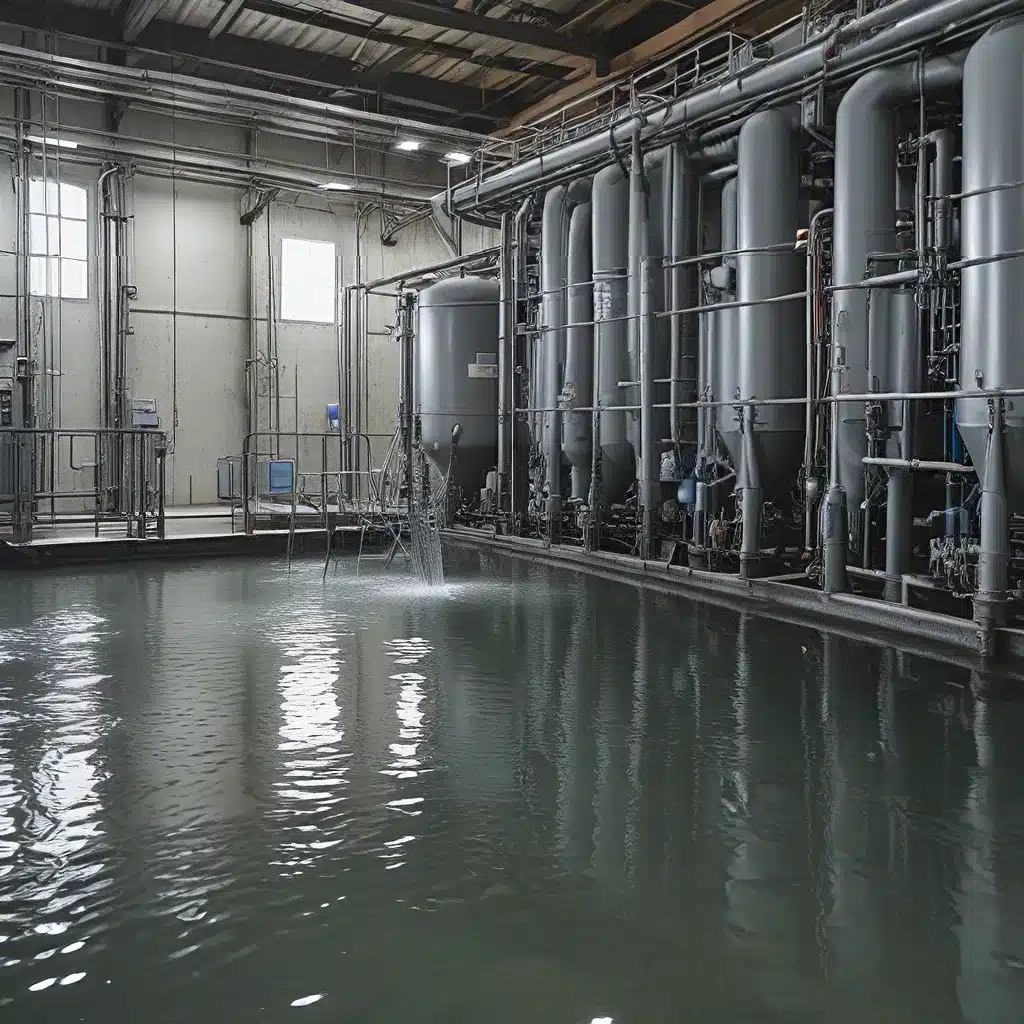
As an environmental enthusiast, I’ve always been fascinated by the critical role water treatment plays in maintaining the health of our planet. And let me tell you, the world of industrial cleaning solutions is where the real magic happens – a realm that’s been quietly revolutionizing the way we approach water treatment.
Cleaning Up the Industrial Mess
Picture this: you’re running a bustling industrial facility, where efficiency and productivity are the name of the game. But behind the scenes, there’s a whole lot of grime, grease, and gunk that needs to be tamed. Enter the unsung heroes of industrial cleaning – the powerful solutions that can tackle even the toughest cleaning challenges.
These aren’t your everyday household cleaners, my friends. No, these are specialized formulas engineered to conquer the dirtiest of the dirty. From heavy-duty degreasers that can cut through the greasiest of machinery to multi-purpose cleaners that can handle a wide range of surfaces, the world of industrial cleaning supplies is a treasure trove of innovation.
But here’s the kicker – these cleaning solutions aren’t just about making things sparkle. They’re playing a crucial role in revolutionizing the way we treat water. You see, the water used in these cleaning processes can be heavily contaminated with all sorts of nasties – from grease and oil to minerals and microbes. And if that water isn’t properly treated, it can wreak havoc on the environment.
The pH Balancing Act
One of the key factors in ensuring effective water treatment is the pH level of the cleaning solutions. As we all learned in high school science class, the pH scale ranges from 0 to 14, with 7 being the neutral sweet spot. Anything below 7 is considered acidic, while anything above 7 is alkaline.
Now, when it comes to industrial cleaning, the pH of the solutions can make all the difference. Highly acidic cleaners (with a pH below 5) are great at tackling scale and mineral deposits, while alkaline cleaners (with a pH above 9) excel at cutting through grease and oils. But the real trick is finding the perfect balance – a solution that can effectively clean without being too harsh on the environment.
Imagine trying to clean a greasy machine part with a highly acidic cleaner. Sure, it might get the job done, but the resulting wastewater would be a nightmare to treat. On the other hand, a mildly alkaline cleaner might not have the same cleaning power, but it would produce a wastewater stream that’s much easier to manage.
The Rise of Ultrasonic Cleaning
But wait, there’s more! In the world of industrial cleaning, there’s a game-changer on the rise: ultrasonic cleaning. This technology uses high-frequency sound waves to agitate cleaning solutions, effectively dislodging even the most stubborn contaminants from industrial parts and surfaces.
The beauty of ultrasonic cleaning lies in its versatility. These systems can tackle a wide range of materials, from rubber and ceramics to hard plastics and metals. And the best part? They can do it all while using less water and fewer harsh chemicals, making them a more environmentally friendly option.
Imagine the scene: a bustling factory floor, where parts are being meticulously cleaned with a gentle, yet powerful ultrasonic system. No more elbow grease, no more hazardous chemicals – just a clean, efficient process that keeps the water treatment system running smoothly.
Monitoring Water Quality: The Vital Link
Of course, the journey to revolutionizing water treatment doesn’t stop there. Keeping a close eye on the quality of the water used in these cleaning solutions is just as crucial as the cleaning process itself.
This is where advanced monitoring technologies come into play. pH sensors, conductivity meters, and a whole host of other water quality instruments can help industrial facilities track the contaminants in their cleaning solutions, ensuring they stay within the optimal range.
Imagine a world where you can instantly detect if the pH of your cleaning solution is starting to drift out of the ideal range. With real-time data at your fingertips, you can make quick adjustments to keep your water treatment process running like a well-oiled machine.
The Eco-Friendly Evolution
But the revolution in industrial cleaning solutions doesn’t stop at just improving water treatment. There’s also a growing focus on developing eco-friendly formulations that minimize the environmental impact.
Gone are the days of harsh, chemical-laden degreasers and cleaners. Instead, we’re seeing the rise of biodegradable, plant-based alternatives that can tackle even the toughest cleaning challenges without leaving a lasting footprint on the planet.
Imagine a world where you can clean your industrial equipment with a solution that’s as kind to the environment as it is effective. No more worrying about toxic runoff or harmful emissions – just a clean, green, and efficient cleaning process.
The Future of Water Treatment
As I delve deeper into this fascinating world of industrial cleaning solutions, I can’t help but feel a sense of excitement for the future of water treatment. The innovations we’re seeing today are just the tip of the iceberg, and I can’t wait to see what the next chapter holds.
Inland Waters Inc., for example, is at the forefront of this revolution, offering a suite of cutting-edge water treatment solutions that leverage the power of advanced cleaning technologies. From ultrasonic systems to eco-friendly formulations, they’re helping industrial facilities across the country rethink the way they approach water treatment.
So, the next time you walk by a bustling industrial facility, take a moment to appreciate the unsung heroes of the cleaning world. These innovative solutions are doing more than just keeping things tidy – they’re playing a vital role in protecting our most precious resource: water.


